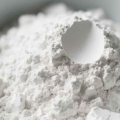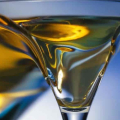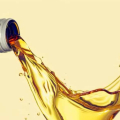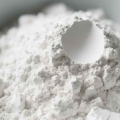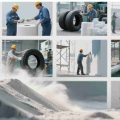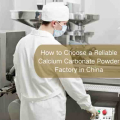- Welcome to China Calcium Carbonate Manufacturer
- WeChat:15078781000
- What is Ground Calcium Carbonate (GCC) in What is the Use of Ground Calcium Carbonate (GCC) in Coatings?
- Key Properties of Ground Calcium Carbonate in Coating Systems
- Applications of GCC in Architectural Coatings
- Surface Modification: Unlocking GCC’s Full Potential
- Industry Trends & Future Outlook
- Conclusion
What is Ground Calcium Carbonate (GCC) in What is the Use of Ground Calcium Carbonate (GCC) in Coatings?
What is the Use of Ground Calcium Carbonate (GCC) in Coatings?Ground calcium carbonate (GCC)—a mineral derived from limestone, marble, or calcite—is mechanically crushed into fine particles for use as a functional filler or pigment in coatings. With properties like high whiteness (>90%), low oil absorption (15–33 mL/100g), and adjustable particle sizes (1–44μm), GCC balances cost efficiency and performance in architectural paints, industrial coatings, and functional film systems.
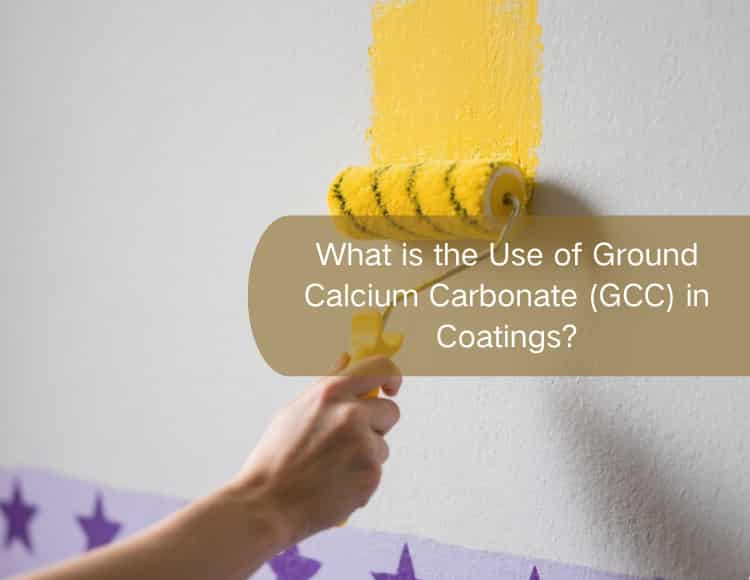
Key Properties of Ground Calcium Carbonate in Coating Systems
Physical & Chemical Advantages
Cost Reduction: Replaces expensive pigments like titanium dioxide (TiO₂) by up to 30% without compromising opacity.
Enhanced Durability: Improves scrub resistance, hardness, and mechanical strength in architectural coatings.
Sustainability: Non-toxic, abundant, and compatible with low-VOC formulations.
| Property | Specification | Impact on Coatings |
|---|---|---|
| Particle Size | 1–44μm (12500–325 mesh) | Finer particles boost opacity & gloss |
| Whiteness | >90% | Enhances brightness & color consistency |
| Oil Absorption | 15–33 mL/100g | Reduces binder demand, lowers costs |
Applications of GCC in Architectural Coatings
Interior Wall Paints
GCC improves opacity and scrub resistance in water-based acrylic paints. Studies show that ultra-fine GCC (<10μm) increases contrast ratio by 15% while reducing TiO₂ usage. For example, Renberolu (2021) found glycol-based dispersants minimize surface defects in GCC-filled latex paints.
Key Benefits:
Low VOC compliance: Ideal for eco-friendly indoor environments.
Thermal stability: Prevents cracking in temperature fluctuations.
Exterior Wall Coatings
In weather-resistant coatings, GCC acts as a structural skeleton, enhancing film thickness and UV resistance. Huang Yuedao’s research (2022) demonstrated that modified GCC with polymer emulsions improves aging resistance by 40% in harsh climates.
Technical Requirements:
Particle gradation: Coarse GCC (20–44μm) for mechanical strength.
Surface treatment: Silane coupling agents boost adhesion to substrates.
Floor Coatings (Epoxy/PU)
GCC reinforces abrasion resistance and thermal stability in industrial floor coatings. Thongpin’s study (2020) showed that 15% GCC in epoxy resins improves impact strength by 25% while lowering raw material costs.
Optimal GCC Grades:
Low oil absorption: Minimizes viscosity spikes.
Moderate fineness: 10–20μm for balanced flow and hardness.
Functional Coatings
Waterproof Coatings
GCC enhances tensile strength and elongation in asphalt-based waterproofing systems. However, its high density requires anti-settling additives. Zhang Xinyu (2021) achieved acid resistance by blending GCC with barium sulfate.
Fire-Resistant Coatings
In non-intumescent fireproof coatings, GCC reduces polymer flammability by 30% and releases CO₂ to suppress flames (GARDelle et al., 2020).

Surface Modification: Unlocking GCC’s Full Potential
Why Modify GCC?
Raw GCC’s hydrophilicity limits compatibility with polymer binders. Surface treatments like stearic acid coating or silane grafting improve dispersion and interfacial adhesion.
Top Modification Methods:
Dry Process: Fatty acids (e.g., stearic acid) applied during grinding.
Wet Process: In-situ polymer grafting for tailored hydrophobicity.
Hybrid Systems: Combining GCC with TiO₂/SiO₂ core-shell structures (Chen et al., 2022).
Industry Trends & Future Outlook
Eco-Friendly Innovations
Nano-GCC: Sub-1μm particles for high-gloss automotive coatings.
Waste Utilization: Shell powder-derived GCC cuts raw material costs by 20% (Zhang et al., 2021).
Challenges & Solutions
Settling Issues: Nano-silica additives improve suspension in thick films.
Standardization: China’s HG/T3249.2-2013 sets benchmarks for GCC purity (>97%) and moisture (<0.5%).
Conclusion
Ground calcium carbonate is a game-changer for coatings, offering unmatched cost-performance ratios and adaptability. From boosting scrub resistance in interior paints to enabling fireproofing innovations, GCC’s role will expand as industries prioritize sustainability and smart manufacturing.
For high-quality ground calcium carbonate tailored to your coating needs, explore our trusted calcium carbonate suppliers. Ready to optimize your coatings? Contact Us or visit our Product Finder to learn more about our premium calcium carbonate solutions or to request a sample.
